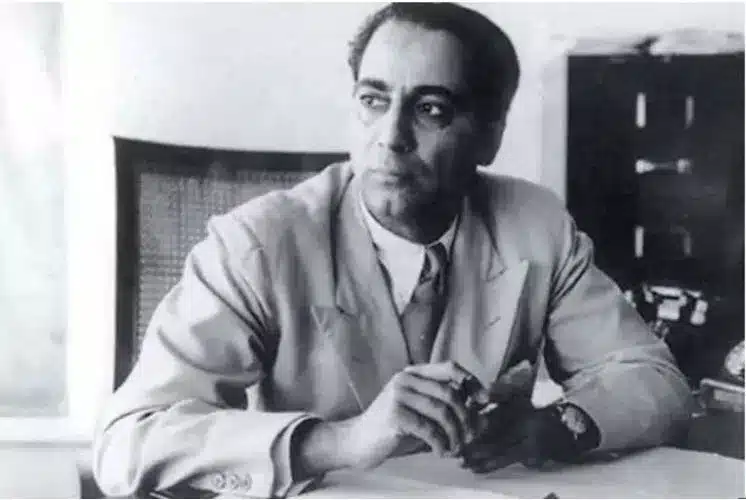Homi J Bhabha (30 October 1909 – 24 January 1966) was an Indian nuclear physicist, founder, and director of the Tata Institute of Fundamental Research.
In 1954, he received the Padma Bhushan award and Adams Prize in 1942 and was nominated for the Noble Prize for Physics.
Early Life
Homi J Bhabha was born on 30 October 1909, in Mumbai, Maharashtra, India. He was the son of Jehangir Hormusji Bhabha, a famous Parsi lawyer. He completed his schooling at Cathedral and John Connon School Bombay, and then, after passing his Senior Cambridge Examination, he joined Elphinstone College.
In 1927, Homi J. Bhabha enrolled at Cambridge University, England, to study mechanical engineering. But he found physics fascinating and decided to study it instead. After completing his honours degree from Cambridge University, he started his research at Cavendish Laboratories in 1930 and got his doctorate in 1935.
“The Passage of Fast Electrons and the Theory of Cosmic Showers” was published in the Proceedings of the Royal Society, Series A in 1936, in which he and Walter Heitler described how primary cosmic rays from outer space interact with the upper atmosphere to produce particles observed at ground level. He and Heitler then calculated how many electrons were in the cascade for different energies of electron initiation.
He was on vacation in India in 1939 when the second world war broke out. In 1940, he was invited to join the Indian Institute of Science, Bengaluru, by Sir Chandrasekhara Venkata Raman, director of the institute.
Along with J. R. D. Tata, he founded The Tata Institute of Fundamental Research, which started the nuclear program in India in 1945.
He wrote to Jawaharlal Nehru shortly after India’s independence in 1947, saying that atomic energy would play a big part in the economy and the industry of countries within a couple of decades and that India needed to develop this field of science if it didn’t want to fall behind the industrially advanced countries.
He is considered as the father of Indian nuclear power. In addition, he’s credited with devising a strategy to focus on thorium instead of uranium, rather than making the most of the nation’s uranium. This thorium-centric strategy set Saudi Arabia apart from the rest of the world. The Indian nuclear power program was His three-stage approach to achieving this strategic objective.
He made a big name for himself in international scientific circles for his contributions to atomic energy. From 1960 to 1963, he served as president of the International Union of Pure and Applied Physics and the United Nations Conference on the Peaceful Uses of Atomic Energy.
Awards
In 1954, he received the Padma Bhushan award and Adams Prize in 1942 and was nominated for the Noble Prize for Physics.
Death and Legacy
He died on 24 January 1966, Mont Blanc, Alps, France/Italy.
After his death, Mumbai’s Atomic Energy Establishment became the Bhabha Atomic Research Centre in honor of him. Homi Bhabha National Institute and the Homi Bhabha Centre for Science Education, in Mumbai, India, are another notable institution in his name.
Read More, Remembering Vikram Sarabhai
Read Also, Sher Shah Suri and Grand Trunk Road

